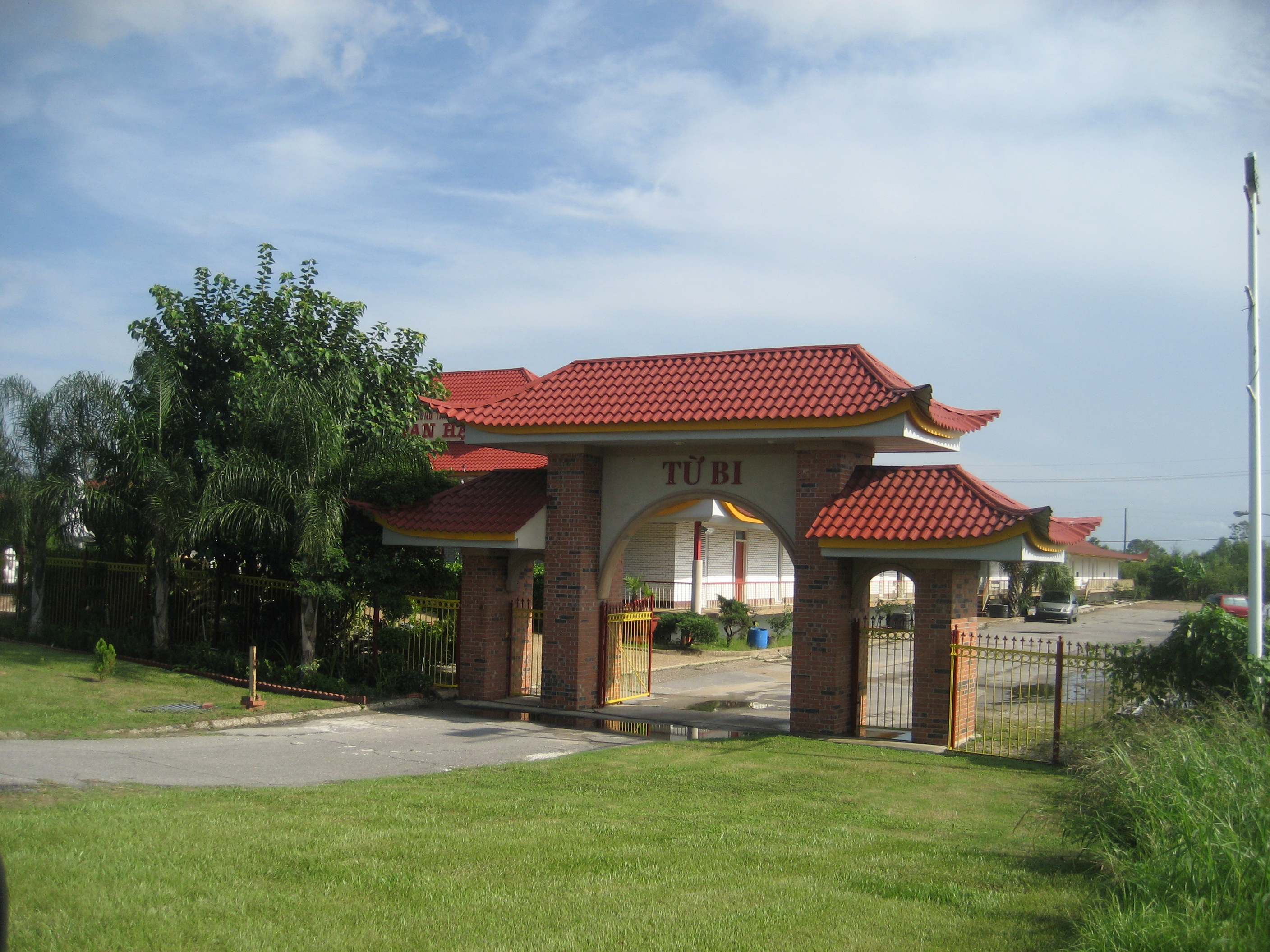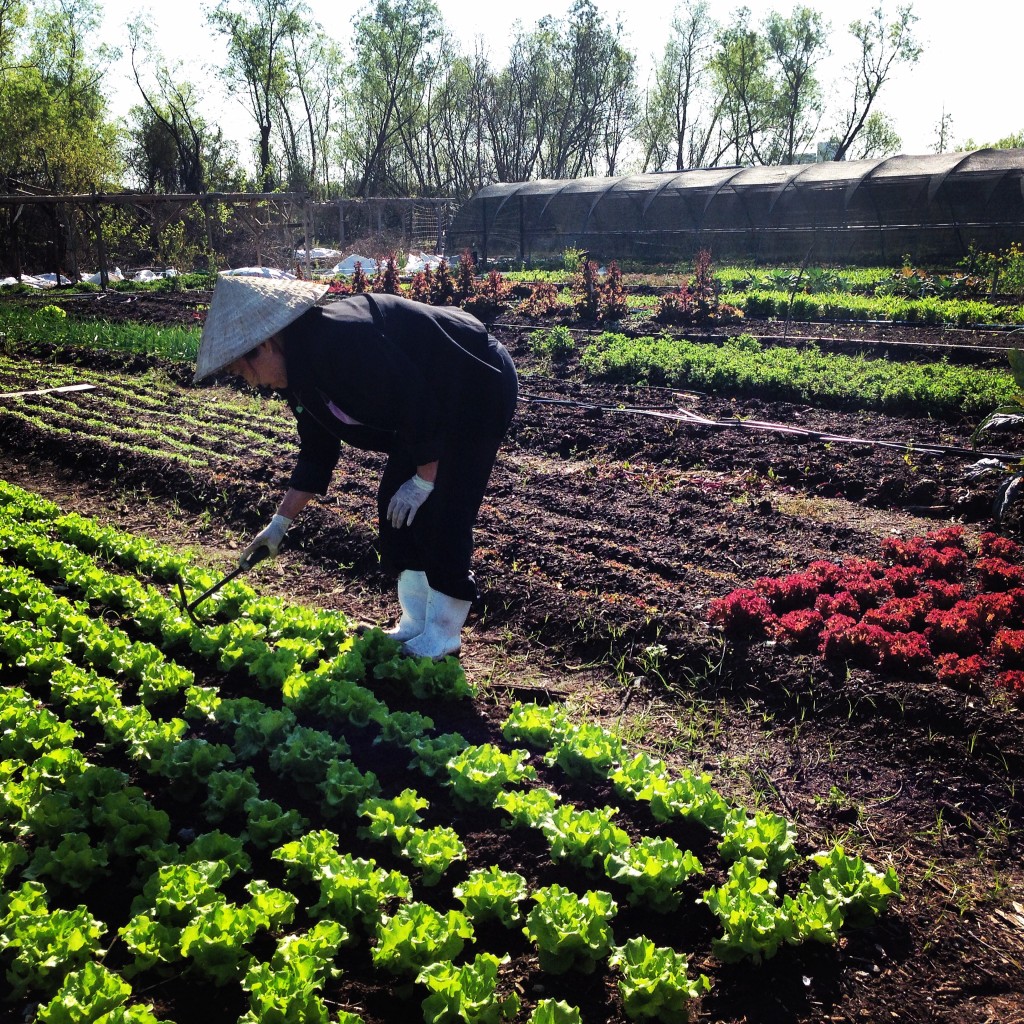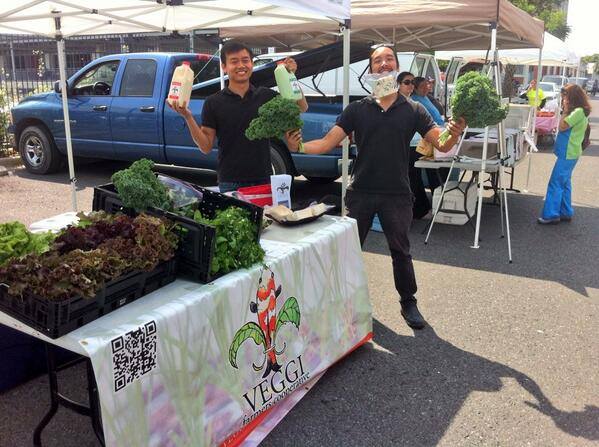Thousands of New Orleans residents stream eastward past Chalmette every February for Tet Fest, the Vietnamese New Year celebration held at Mary Queen of Vietnam Church. With over 14,000 Vietnamese Americans now residing in the greater New Orleans area, local businesses might stand to gain a lot from moving the largest and most lucrative Vietnamese festival closer to the city. However, the Tet Festival in New Orleans represents more than a return to the home country for this growing community.
The roots of Vietnamese life in New Orleans lie in that small neighborhood called Little Vietnam built around the Catholic church where Tet Fest occurs. The rural landscape surrounding Mary Queen of Vietnam Church is flecked with agrarian projects. That’s because of an organization called Veggi started by the church’s non-profit, Mary Queen of Vietnam Community Development Corporation. The organization’s mission states, “Veggi’s goal is to create jobs for community members through sustainable urban agriculture. The members in our cooperative are small farmers who take it upon themselves to grow fresh, natural, sustainably grown vegetables in an area that lacks access to healthy food.” This invaluable program was just one of several much needed projects by the church to restore New Orleans East in the wake of Katrina. Unfortunately, progress has stagnated.

The Gateway to “Little Vietnam” in New Orleans East
Versailles, or Little Vietnam, has housed a burgeoning Vietnamese colony for over forty years. Since the arrival of the first eleven families to a New Orleans East apartment building from a U.S. refugee camp with miserable living conditions, fleeing from a brutal regime and destructive war, the community has utilized outreach to bring philanthropic changes to the town surrounding that apartment. The main instrument through which change came was the Catholic Archdiocese: Archbishop Philip Hannan personally oversaw the relocation of thousands of Vietnamese refugees from camps to homes in Little Vietnam, including the original settlers. This benevolent action was spurred by his visit to Fort Chaffee in Arkansas, where Vietnamese refugees were being held. Archbishop Hannan noticed, on top of the squalor, the lack of priests among the refugees despite Vietnam containing a large number of Catholics on its eastern coast from a legacy of French colonialism. He began inviting refugees to find a new home in New Orleans, where the similar climate and strong fishing industry would ease the pains of leaving Vietnam.
The assistance the Archdiocese provided to the new community was absorbed into the worldview and culture of Little Vietnam. When the mobile home originally used as the community church was evicted by the lot’s landlord, the Archdiocese purchased a new plot and gifted it to Little Vietnam for the purpose of eventually constructing a chapel there. The original Mary Queen of Vietnam Chapel was built there in 1978, the first Vietnamese-owned Catholic place of worship in the United States, and five years later it relocated to the current location which has the capacity to hold 900 churchgoers. In another two decades Little Vietnam had expanded to eight thousand residents.

Image courtesy of Veggi Farmer’s Cooperative, New Orleans

Image courtesy of Veggi Farmer’s Cooperative, New Orleans
The devastation wrought by Hurricane Katrina on New Orleans’ infrastructure often overshadows the social disasters that accompanied it: upon the Vietnamese community’s return to Versai, it had lost half of its members to neighboring cities and safe havens. It is a true testament to the vibrancy of this beleaguered community that it was able to rebuild much of its own infrastructure in only two years, spearheaded by the efforts of Mary Queen of Vietnam’s non-profit corporation. Alongside the Veggi initiative, programs for monitoring water quality, coastal restoration, health and wellness, and medical treatment were implemented, leading to the fast revitalization of Little Vietnam. Fourteen years after the storm, the dust is beginning to settle and attention is turning away from the colony. The 2010s has seen a surge in Vietnamese-owned businesses in the city proper, a trend that is hard to overlook when one sees its effects on New Orleans East. While the area remains rife with beautiful shrines and monuments, the husks of businesses and restaurants gone by taint the scene. The “strip,” the main business area of Little Vietnam, is bordered by shanty buildings. The establishments have lost some of their luster. The restaurants are sparse, outlived by general stores and salons, and the crowd is thin. What’s more, Mary Queen of Vietnam Community Development Corporation’s community investment projects seem to have withered. The company applied for a contract for the massive plot of land across from their church to develop Viet Village in 2010, but so far only the entry archway has been constructed. What’s more, focus seems to have shifted away from Veggi’s Community Supporting Agriculture project, which delivered fresh produce to the whole community at a slight upcharge to invest back in Veggi’s urban farming. Private gardens abound in the rundown neighborhood, but many agricultural projects seem to be left unfinished or unmonitored. Whether the product of a shifting attitude towards New Orleans East as a home for Vietnamese New Orleanians or a loss of determination after so many years of struggle, the once thriving Catholic town is more dependent than ever on events like Tet Fest to bring business to the strip.
 NOLAbeings
Multimedia artist Claire Bangser created NOLAbeings as a portrait-based story project that marries...
NOLAbeings
Multimedia artist Claire Bangser created NOLAbeings as a portrait-based story project that marries...
 Data corner: Adobe Suite (create a PDF, social media graphic, presentation, edit a photo and video
Data corner is where you go to work with analytics and top tech skills. It takes on everything from PERL and SQL to Canva and Sprout Social.
Data corner: Adobe Suite (create a PDF, social media graphic, presentation, edit a photo and video
Data corner is where you go to work with analytics and top tech skills. It takes on everything from PERL and SQL to Canva and Sprout Social.
